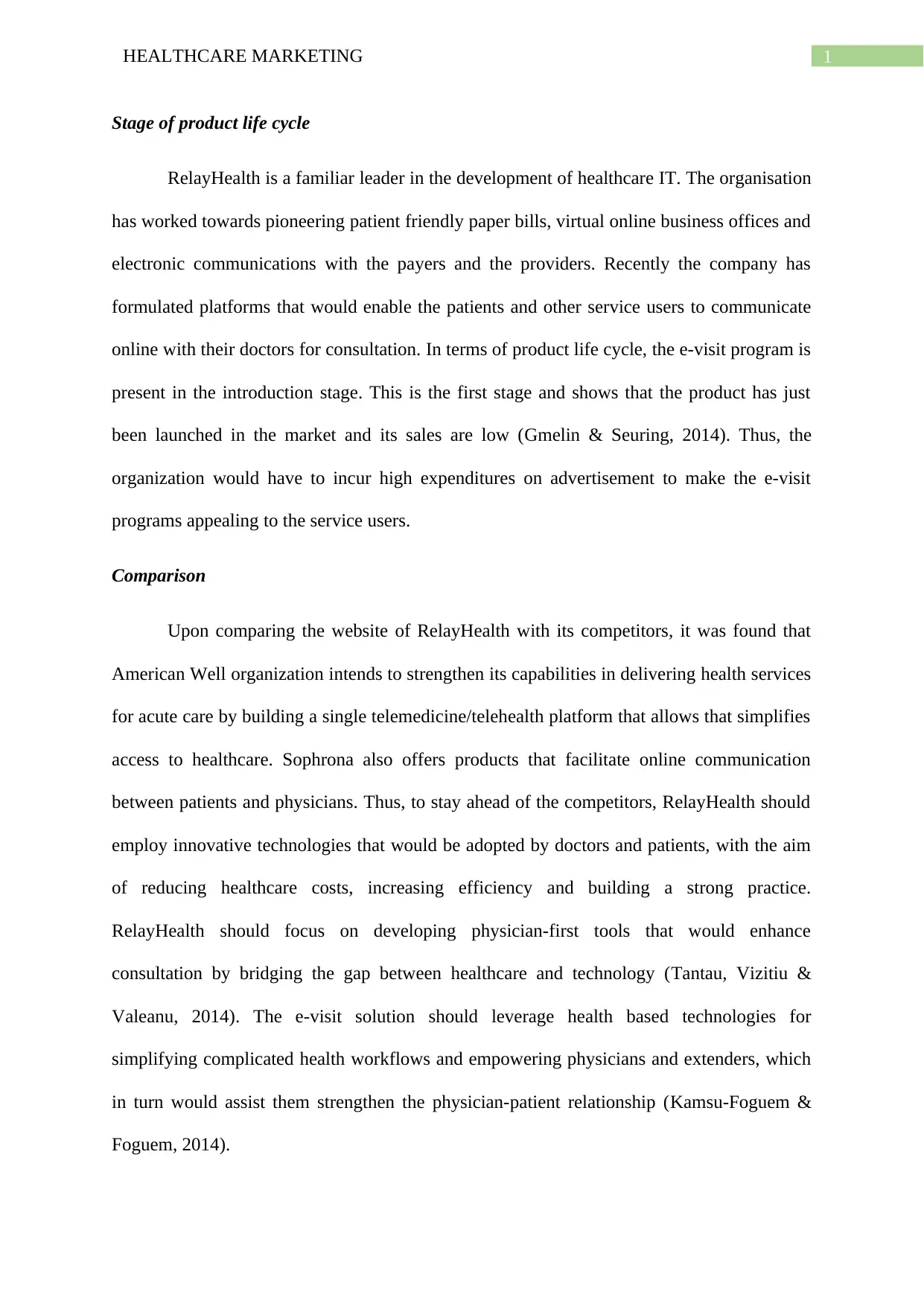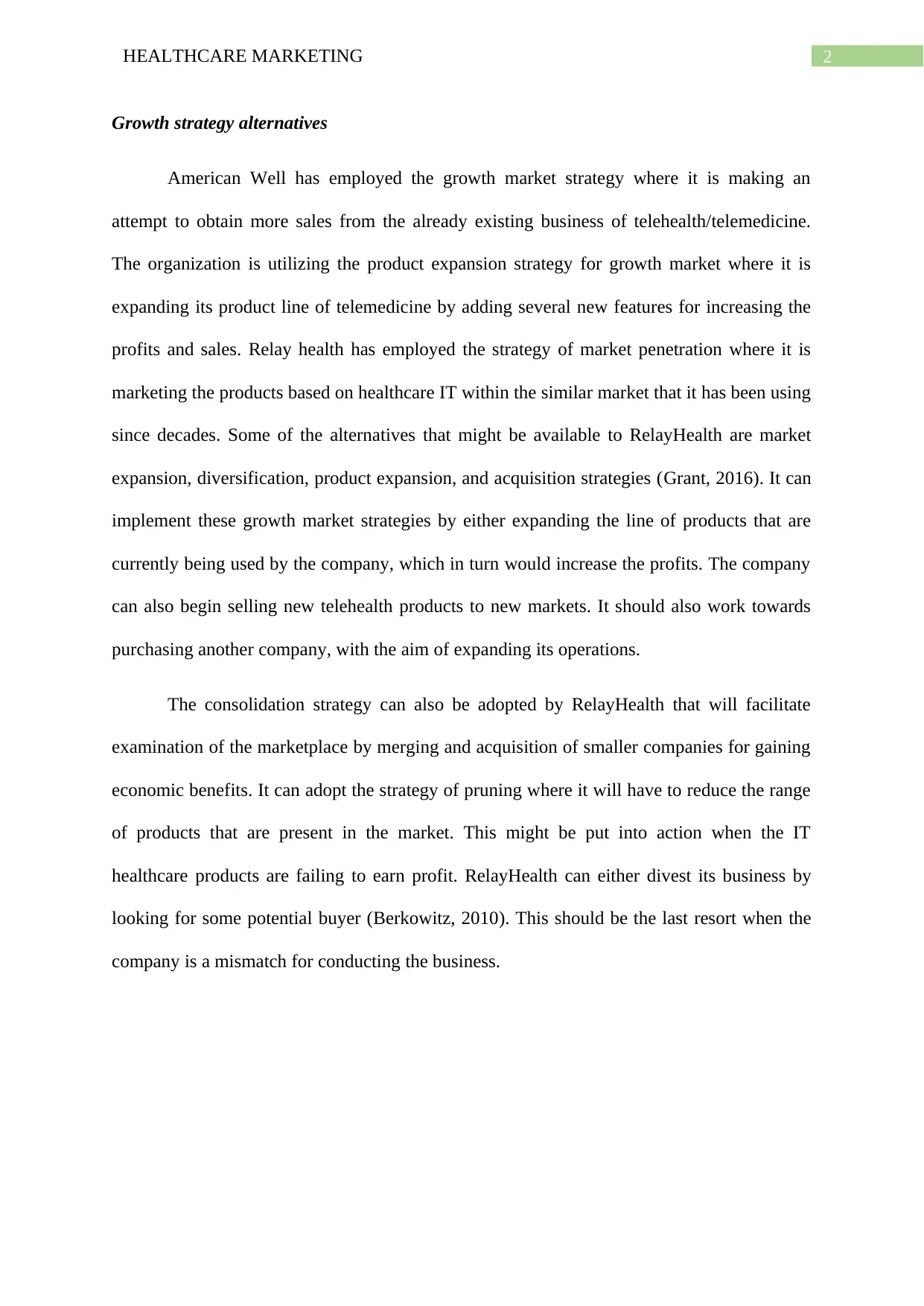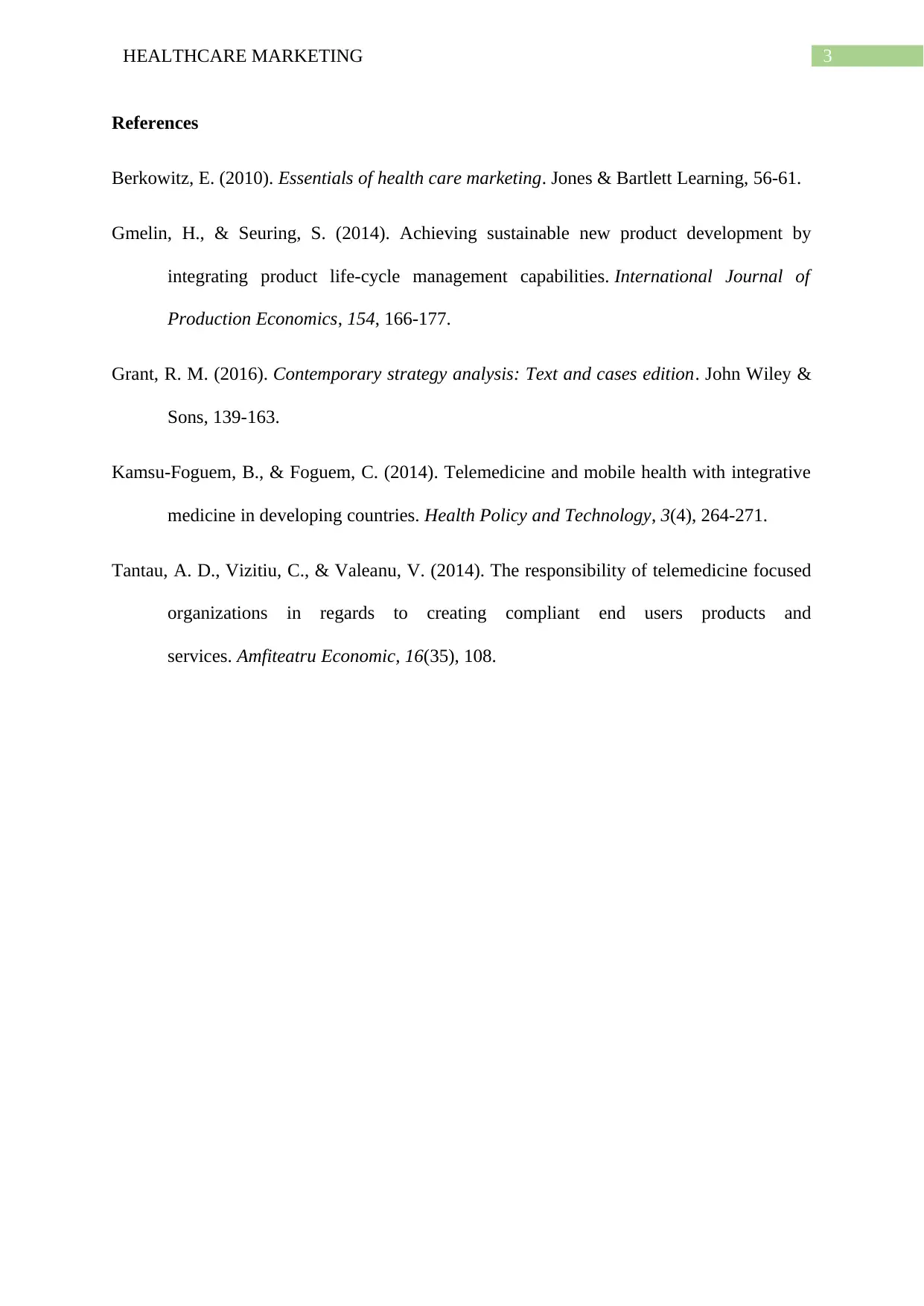Analyzing RelayHealth's E-Visit Program: A Healthcare Marketing Case
VerifiedAdded on 2023/06/10
|4
|768
|361
Case Study
AI Summary
This case study examines RelayHealth's e-visit program, focusing on its stage in the product life cycle and comparing it to competitors like American Well and Sophrona. It identifies the e-visit program as being in the introduction stage, requiring significant advertising investment. The analysis suggests RelayHealth should prioritize innovative, physician-first tools to enhance consultation and simplify healthcare workflows, potentially leveraging market expansion, product expansion, or acquisition strategies to maintain a competitive edge. Strategies like market penetration, diversification, and consolidation are also discussed as alternatives for RelayHealth to consider for growth and profitability. Desklib offers a wealth of similar case studies and solved assignments for students.
1 out of 4






![[object Object]](/_next/static/media/star-bottom.7253800d.svg)